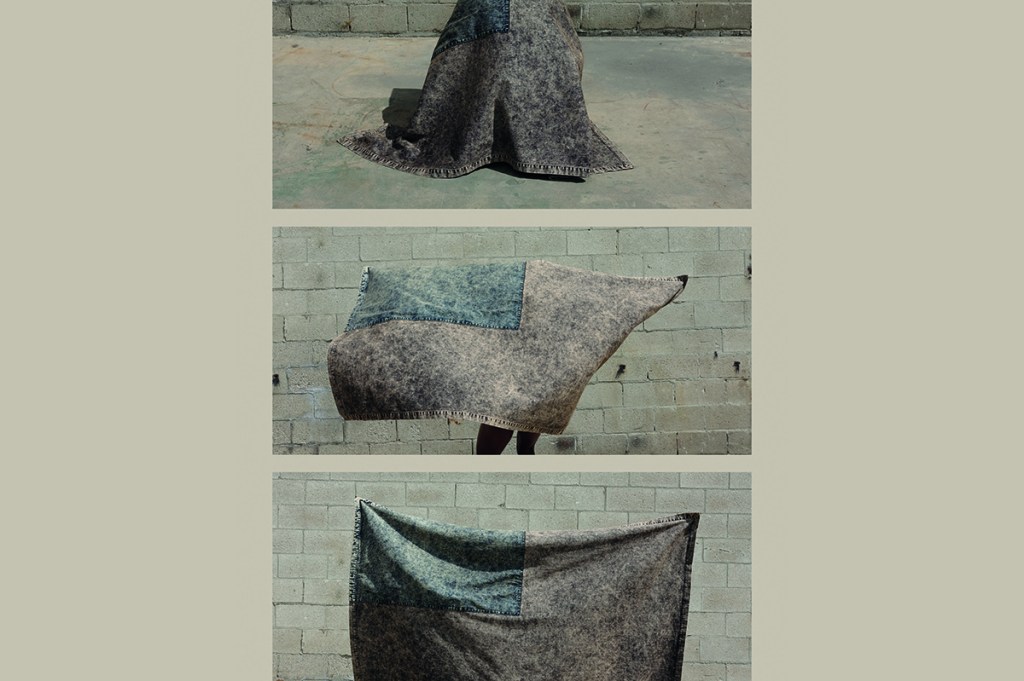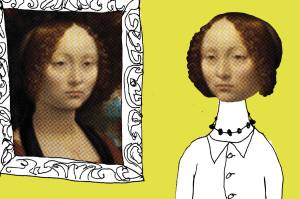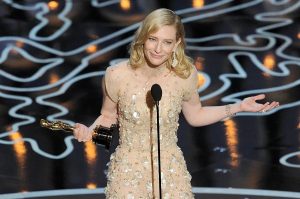In America: A Lexicon of Fashion, now at the Metropolitan Museum’s Costume Institute, leads with a quote from Jesse Jackson: “America is… like a quilt — many patches, many pieces, many colors, many sizes, all woven and held together by a common thread.”
Odd, then, that framed above the first wall panel is a drab, blank-faced suggestion of an American flag constructed from just two rectangular pieces of faded denim. Created by Sterling Ruby as a mourning garment — a model huddles under a wearable version in the exhibition poster — “Veil Flag” (2020) sits awkwardly next to the bright patchwork skirts, dresses, trousers and jackets also on display in the first room. Yet it’s the right way to open a fashion exhibition that makes you think, not swoon.
Nearby there’s an altogether merrier Ralph Lauren design from 1982-83, labeled “Nostalgia” and consisting of an intarsia-knit sweater inspired by nineteenth-century needlework and a long skirt stitched from triangle patches. In the next display, “Sentimentality,” Emily Adams Bode takes scissors to antique quilts to construct a polychromatic suit for her 2020-21 collection.
See, the show is a game of word association. In an introductory video, Andrew Bolton, the curator, complains that discussions of American fashion usually focus on its “simplicity, practicality, and functionality,” whereas European haute couture is deemed more expressive. Bolton thinks this unfair, so he’s stuck a splashy abstract noun above each of the hundred or so mannequins that reflects the American (usually female) design beneath. Hence our new “lexicon of fashion.”
Some of the word choices make perfect sense. Above an ivory ensemble of oversized cashmere knitwear and loose silk-cashmere trousers for the 2020-21 autumn/winter collection by The Row — the Olsen twins’ wildly successful second act — is the word “Coziness.” So soft, so creamy — cozy indeed. (There was no glass barrier; I was tempted to touch it.) Others are just bizarre. How does Rudi Gernreich’s 1970 skin-tight, all-black, unisex jumpsuit, with a turtleneck so high it can double as a Fauci-approved Covid mask, evoke “Optimism”? Not sure I’m clever enough for this.
Predictably, Thunbergian logic has the Met salivating over “sustainable” designs. But when the most interesting part of a piece is its feel-good source material, rather than its color, line or ornamentation — you know, what it looks like — what’s the point? The only new works that truly made my jaw drop were two by New York’s Olivia Cheng for Dauphinette. In the first, a flouncy white knee-length dress, real pressed pansies and daisies are slipped between layers of sheer silk organza under the bust and at the cuff. To construct the second, a chainmail tunic, Cheng linked together hundreds of tiny blooms preserved in flat, clear resin circles with small silver hoops.
Cheng’s work is a highlight in an otherwise humdrum show. Despite their heady titles, many of these designs don’t conjure up strong emotions — and there’s nothing wrong with that. The ideal American woman, as imagined here, is confident, athletic, vivacious. She doesn’t need the clothes to talk in her place.
But every so often, she’ll want a dress that makes the heart race. I guess she’ll have to look to the French. Christian Dior: Designer of Dreams, now on at the Brooklyn Museum, is pure fantasy. Room upon room is lined with cinch-waisted, wide-skirted, round-shouldered gowns. It’s a vast, sprawling, sparkling show, stretching from the 1947 “Bar” suit (dubbed the ‘New Look’ by the Harper’s Bazaar editor Carmel Snow) to the latest designs by the brand’s current creative director, Maria Grazia Chiuri.
The touch of skilled hands is visible throughout. “In a machine age,” said Christian Dior, “dressmaking is one of the last refuges of the human, the personal, the inimitable.” There are gorgeous sketches by the master, swatches of fabric pinned to each. (Dior worked as an illustrator before turning to fashion.) Mood boards by John Galliano and Chiuri are full of zany clippings. A short video shows individual silk petals being cut, dyed, molded and sewn onto skirts that will swish down the runway for a minute at most.
Visitors wander through a massive, enchanted garden, a neoclassical temple and a room full of white toiles, or test garments. The final section contains various celeb castoffs. Poor Marilyn Monroe’s long-sleeved backless black gown is here — the one she wore in what became Bert Stern’s The Last Sitting for Vogue in 1962, just six weeks before her death. There are spanking new ones, too, including Anya Taylor-Joy’s plunging emerald-green dress and cape worn to the digital Golden Globes last February.
It’s easy to see why Dior still rules the red carpet. Feeling shy? Not to worry — you don’t need a big personality in these dresses. They tell their own stories. If Dior designed my dreams, I’m not sure I’d want to wake up.
In America: A Lexicon of Fashion is on view at the Metropolitan Museum of Art until September 5, 2022. Christian Dior: Designer of Dreams is on view at the Brooklyn Museum until February 20, 2022. This article was originally published in The Spectator’s December 2021 World edition.


















